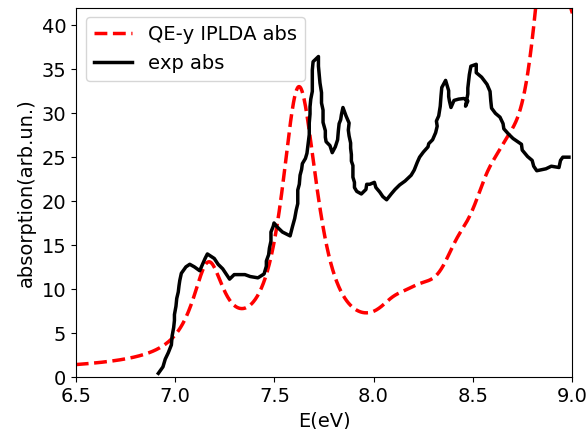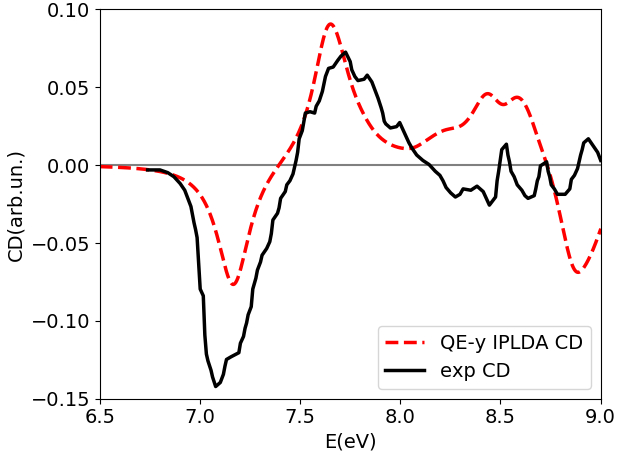Dichroism in molecules
```WARNING: under construction
Circular dichroism (CD) is dichroism involving circularly polarized light, i.e., the differential absorption of left- and right-handed light[1]. Dichroism in absorption can originate from an asymmetry in the dielectric tensor, which can be induced by the presence of either an external magnetic field or a spontaneous magnetization (MCD). This can be computed from the off-diagonal elements of the dielectric tensor. See the tutorial on The magneto-optical Kerr effect (MOKE). Another form of dichroism can be due to the chiral nature of molecules or materials[2] and goes under the name of natural circular dichroism (NCD). This latter can be related to the beta tensor and will be discussed in the present tutorial.
Prerequisites
Databases
Input files
Few euqations
Methyloxirane
Methyloxirane has often been used in the literature as a benchmark molecule for CD calculations against experimental data, due to its rigidity. Here we use it to show how to compute NCD using the yambo code.
Below the results at the independet particle level with converged parameters, with absorption on the left and CD on on the right.
References
- ↑ Circular Dichroism on wikipedia
- ↑ Chiral Media on wikipedia

